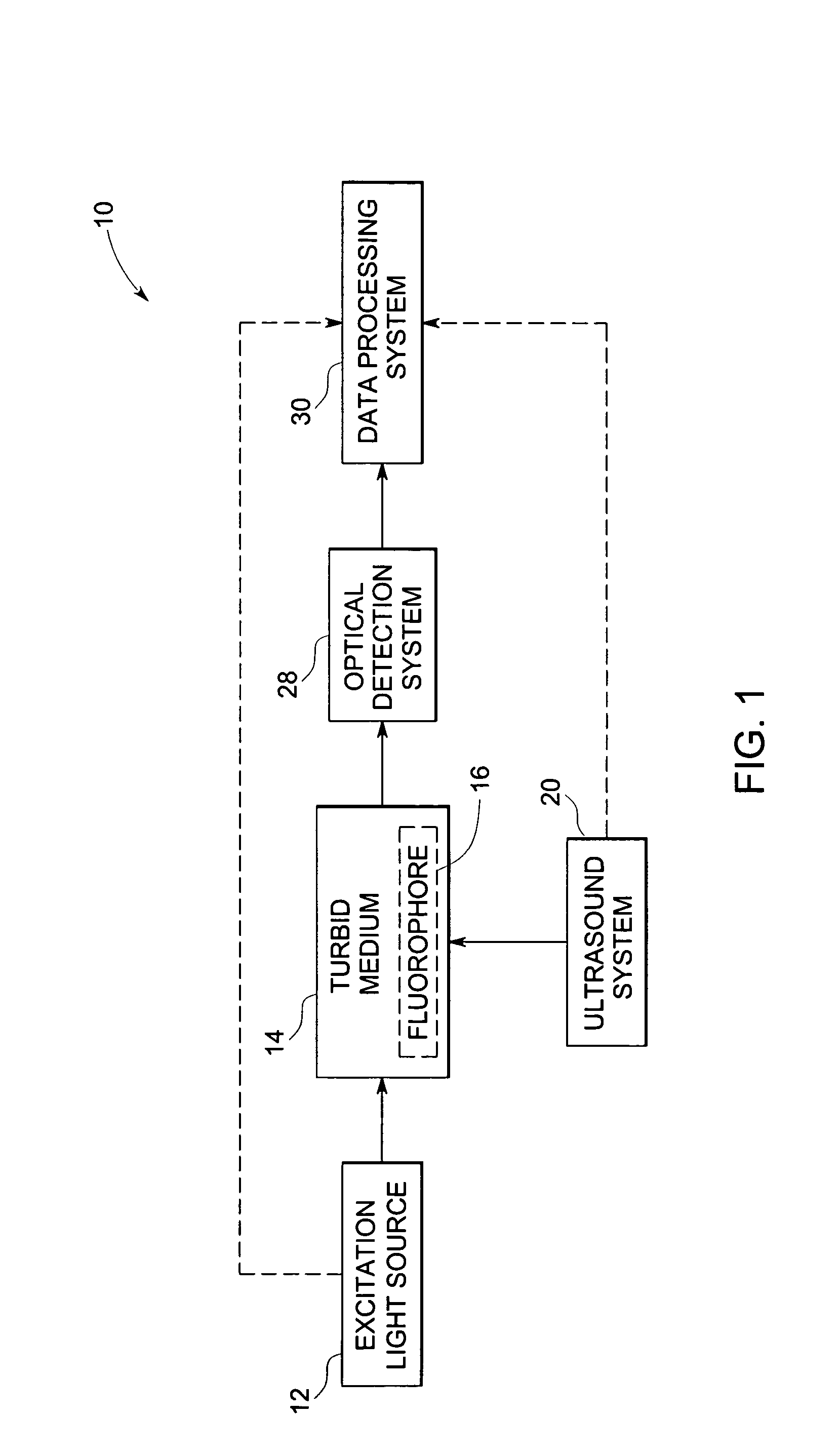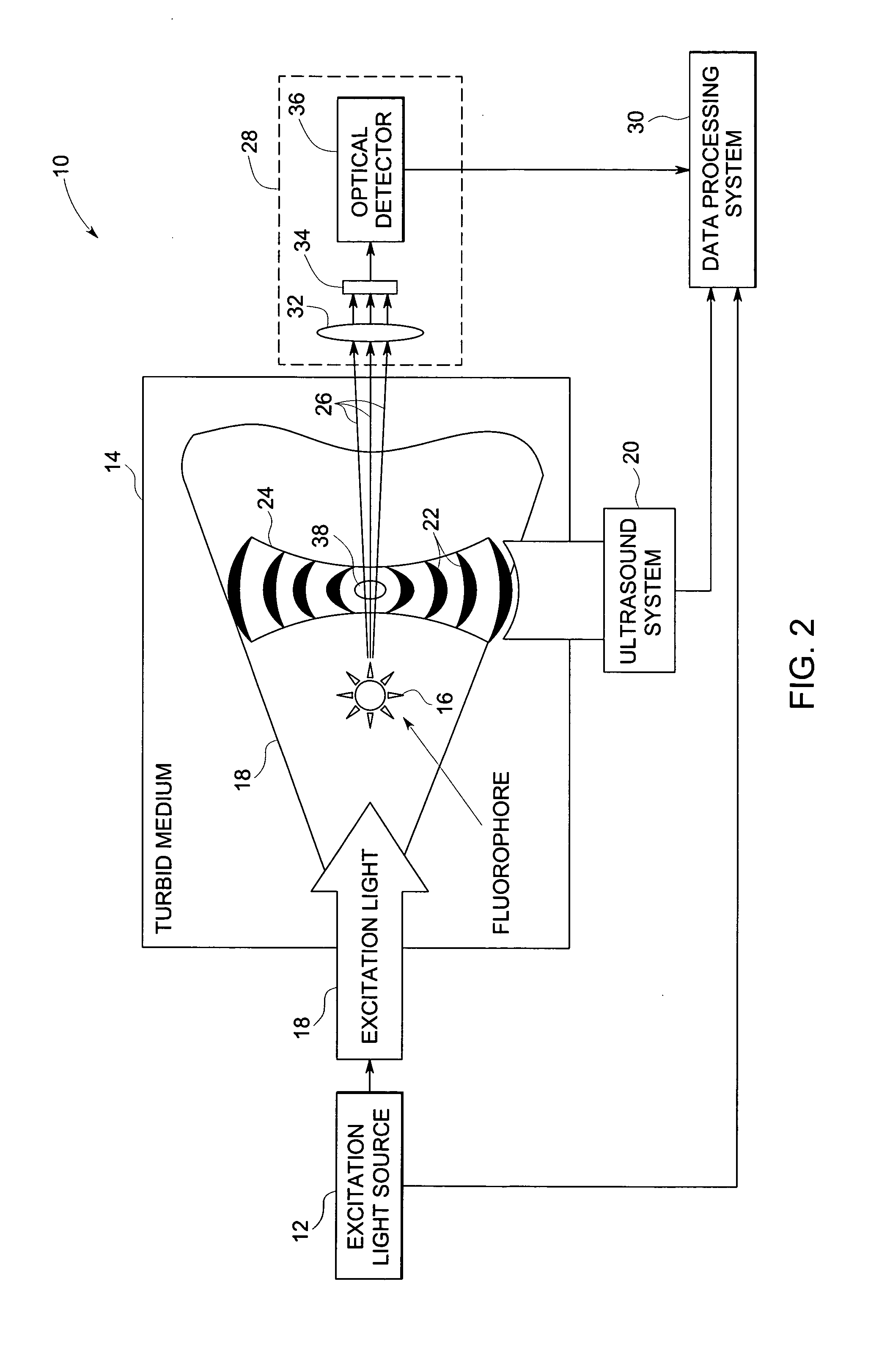System and method for imaging based on ultrasonic tagging of light
a technology of ultrasonic tagging and light, applied in the field of imaging, can solve the problems of complicated optical reconstruction, unique solution, and ill-posed nature of optical reconstruction, and achieve the effects of improving the accuracy of optical reconstruction
- Summary
- Abstract
- Description
- Claims
- Application Information
AI Technical Summary
Benefits of technology
Problems solved by technology
Method used
Image
Examples
Embodiment Construction
[0023] The present techniques relate to acousto-optic imaging based on localization of fluorescence in a turbid medium (simultaneously absorbing and scattering medium). In various embodiments of the present technique, systems and methods will be employed for localizing an object of interest, e.g., a lesion labeled with a fluorescent dye, in a turbid medium, e.g., biological tissue.
[0024] Referring now to FIG. 1 and FIG. 2, an exemplary acousto-optic imaging system 10 generally includes an excitation light source 12 for illuminating a turbid medium 14, including an object of interest 16, with radiant energy, e.g., light 18. The light 18 excites a fluorophore contrast agent present in the object of interest 16 to cause fluorescence. The system 10 further includes an ultrasound generation system 20 for generating ultrasound pulses or an ultrasonic beam 22 directed into the turbid medium 14, thereby inducing volumetric changes of optical properties of the medium, such as refractive ind...
PUM
| Property | Measurement | Unit |
|---|---|---|
| near infrared (NIR) wavelengths | aaaaa | aaaaa |
| wavelengths | aaaaa | aaaaa |
| diameter | aaaaa | aaaaa |
Abstract
Description
Claims
Application Information
 Login to View More
Login to View More - R&D
- Intellectual Property
- Life Sciences
- Materials
- Tech Scout
- Unparalleled Data Quality
- Higher Quality Content
- 60% Fewer Hallucinations
Browse by: Latest US Patents, China's latest patents, Technical Efficacy Thesaurus, Application Domain, Technology Topic, Popular Technical Reports.
© 2025 PatSnap. All rights reserved.Legal|Privacy policy|Modern Slavery Act Transparency Statement|Sitemap|About US| Contact US: help@patsnap.com



